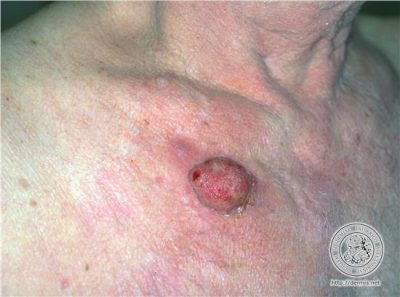SERVICES
- Allergy Screening
- Chemical Peels
- Dermapen
- Facial Skin Analysis
- FreshEyes
- Hyperhidrosis (Excessive Sweating)
- Hair Loss Treatment
- Laser Clinic
- Liquid Facelift
- Keloid Treatments
- Medical Facials
- Medical Treatments
- Mole Mapping
- Photodynamic Therapy (PDT)
- Skincare Advice
- Pigmentation Treatment
- Surgical Procedures
- Ultraviolet Phototherapy
USEFUL LINKS
What is a squamous cell carcinoma?
 There are two main categories of skin cancer: melanomas and non-melanoma skin cancers. Squamous cell carcinoma is one of the non-melanoma skin cancers. It is the second most common type of skin cancer in South Africa
There are two main categories of skin cancer: melanomas and non-melanoma skin cancers. Squamous cell carcinoma is one of the non-melanoma skin cancers. It is the second most common type of skin cancer in South Africa
What causes a squamous cell carcinoma?
The most common cause is too much exposure to ultra-violet light from the sun or from sun beds. This causes certain cells (keratinocytes) in one of the layers of the skin (the epidermis) to grow out of control into a tumour.
Squamous cell carcinomas can occur on any part of your body, but are most common on areas that are exposed to the sun, such as your head and neck (including the lips and ears) and the backs of your hands. Squamous cell carcinomas can also crop up where the skin has been damaged by X-rays, and also on old scars, ulcers, burns and persistent chronic wounds. Squamous cell carcinomas are not contagious.
Who is most likely to have a squamous cell carcinoma?
Squamous cell carcinomas mainly affect the following groups:
- Older people — even those who tend to avoid the sun – but younger ones who are out in the sun a lot are at risk too.
- Builders, farmers, surfers, sailors and people who often use sun-beds can develop squamous cell carcinomas when they are quite young.
- Those with a fair skin are more likely to get them than people with a dark skin.
- Anyone who has had a lot of ultraviolet light treatment for skin conditions such as psoriasis will also be at increased risk of getting a squamous cell carcinomas.
- Those whose immune system has been suppressed by medication taken after an organ transplant, or by treatment for leukaemia or a lymphoma.
Are squamous cell carcinomas hereditary?
No, they are not; but some of the things that increase the risk of getting one, such as fair skin, a tendency to burn rather than tan, and freckling, do run in families.
What does a squamous cell carcinoma look like?
A squamous cell carcinoma usually appears as a scaly or crusty area of skin, with a red, inflamed base. Most small squamous cell carcinomas are not painful.
How will my squamous cell carcinoma be diagnosed?
If your doctor thinks that the mark on your skin needs further investigation, you will be referred to a skin specialist who will decide whether or not it really is a squamous cell carcinoma. To confirm the diagnosis, a small piece of the abnormal skin (a biopsy), or the whole area (an excision biopsy), will be cut out and examined under the microscope. You will be given a local anaesthetic beforehand to numb the skin.
Can a squamous cell carcinoma be cured?
Yes, squamous cell carcinomas can be cured if they are detected early. But if they are left untreated for too long, a few may spread to other parts of the body, and this can be serious and painful.
How can a squamous cell carcinoma be treated?
Surgery is the first choice of treatment and several different methods are available. To select the right one, your surgeon will take into account the size of the squamous cell carcinoma, where it is, what type it is, and how long you have had it. The most common surgical technique is simply to cut the squamous cell carcinoma away along with some clear skin around it. This is done under a local anaesthetic. Other types of surgery, which are used less often, include:
- Curettage and cautery — first the squamous cell carcinoma is scraped away (curettage) then the skin surface is sealed (cautery). This is a reasonable treatment for small squamous cell carcinomas
- Cryotherapy – freezing the squamous cell carcinoma off, as you would a wart, usually with liquid nitrogen.
- Advanced surgery — using the Mohs’ technique, which is undertaken only in specialist centres, and then only for difficult or recurring squamous cell carcinomas.
- The removal of lymph nodes — this is unusual but may be needed if there are concerns that the squamous cell carcinoma has spread.
Radiotherapy (treatment with X-rays) may be used if the squamous cell carcinoma is large or in an awkward place. You may be offered this on its own or alongside surgery. Radiotherapy may also be used to relieve symptoms when a squamous cell carcinoma has spread to other parts of the body.
Chemotherapy (treatment with drugs) is only used when a squamous cell carcinoma has spread to other parts of the body.
What can I do?
Treatment will be much easier if your squamous cell carcinoma is detected early. It follows that you should see your doctor if you have any marks on your skin which are:
- Growing.
- Bleeding.
- Changing in appearance in any way.
- Never healing completely.
You can also take some simple precautions to help prevent a squamous cell carcinoma appearing:
Top sun safety tips
- Protect the skin with clothing, including a hat, T shirt and UV protective sunglasses
- Seek shade between 11am and 3pm when it’s sunny
- Use a sunscreen of at least SPF 30 (SPF 50 for children or people with pale skin) which also has high UVA protection
- Keep babies and young children out of direct sunlight
- Sunscreens should not be used as an alternative to clothing and shade, rather they offer additional protection. No sunscreen will provide 100% protection.
Patient Testimonials
EXCELLENTTrustindex verifies that the original source of the review is Google. From my first visit with Dr Jhetam I knew I would go back. He is compassionate , friendly and has an interaction which made you feel comfortable. This is very important in any doctor because our relationship with our doctor is very intimate.Trustindex verifies that the original source of the review is Google. Dr Jhetman is truly one of a kind. Anyone who is fortunate enough to be in his care can so grateful. Academic, informative and reassuring. It’s hard to find a doctor who has this combination of skills these days. He dealt with my Melonoma concerns with swift and professional care. And his staff are equally as competent and caring. I cannot commend Dr Jhetman and his staff enough on true patient care. Thank you!Trustindex verifies that the original source of the review is Google. I was absolutely satisfied with my experience with Dr Jhetham & his winning team. Keep up the good work.Trustindex verifies that the original source of the review is Google. Best skin doctor..Dr Jetham prescribed the best products that have brought so much of a glow to my skin..being a transplant patient and so much happening to my skin just 4 visits to him and my face is back to it's radiance ..I hightly reccomend Dr Jetham ...you won't go wrong..Trustindex verifies that the original source of the review is Google. Dr. Imraan Jhetam and his team provided exceptional care, showcasing professionalism and compassion in every interaction. Dr. Jhetam took the time to thoroughly explain everything, addressing each of my concerns with empathy and understanding. My experience with him was truly wonderful, and I highly appreciate his dedication to patient care.Verified by TrustindexTrustindex verified badge is the Universal Symbol of Trust. Only the greatest companies can get the verified badge who has a review score above 4.5, based on customer reviews over the past 12 months. Read more



